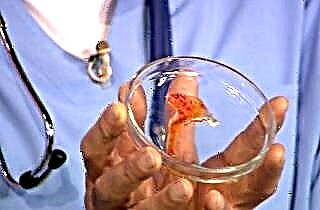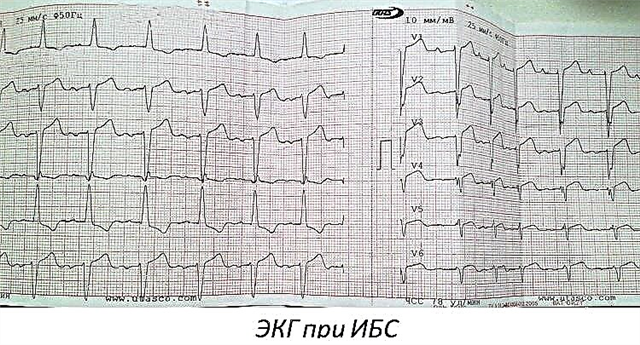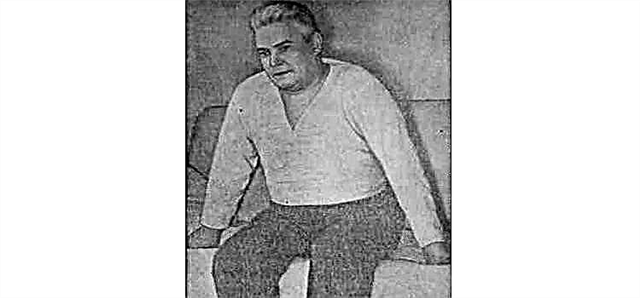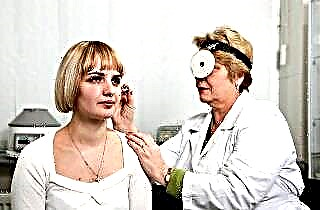Cough is often a concomitant symptom of most diseases of the respiratory system. The cough reflex is a physiological protective reaction of the body, aimed at removing the irritant and products of the pathological process from the lumen of the respiratory tract.
Causes and pathogenesis
 Of all visits to a doctor, in 30% of cases, complaints about the presence of a cough in a child occupy. The reasons for its occurrence are varied. Diagnosing a cough is often difficult.
Of all visits to a doctor, in 30% of cases, complaints about the presence of a cough in a child occupy. The reasons for its occurrence are varied. Diagnosing a cough is often difficult.
The tracheobronchial secretion is a product with a protective function. Goblet cells, bronchial glands, alveolar epithelium and bronchioles take part in its formation. Its secretion and excretion changes under the influence of infectious, mechanical, chemical pathogenic factors. In inflammatory processes in the respiratory tract, the functional protective ability of the epithelial cells of the mucous membrane is impaired.
The onset of cough is facilitated by the action on the body of exogenous and endogenous factors (dust, foreign body, allergens, chemicals, tobacco smoke, viruses, bacteria, fungi and their waste products).
Cough syndrome develops as a result of a violation of adhesive processes: changes in viscosity, elasticity of bronchial secretions and sputum separation from the surface with a reduced active motor ability of the ciliated epithelium.
Rare cough tremors (5-12 times) throughout the day is a physiological norm. It is observed in children more often after sleep. Without strengthening and development, it should not cause concern for the parents.
A cough, accompanied by mucus, wheezing, even without an increase in body temperature, indicates the presence of a pathological process in the body and requires medical attention.
The symptom of what is a wet cough
 A productive cough is a symptom of:
A productive cough is a symptom of:
- bronchitis (acute and chronic);
- viral, bacterial, fungal infections;
- the inflammatory process when a foreign body enters;
- pneumonia during the period of resolution;
- obstruction of the lungs (chronic form);
- bronchial asthma;
- an allergic reaction;
- bronchiectasis and bronchopulmonary diseases;
- tuberculous lesion.
The nature of the secreted secretion indicates the localization of the pathological process and the complexity of the disease.
Clinical picture
A wet cough in a child without fever indicates:
- a sluggish, inflammatory process in the child's body;
- allergic reaction (mechanical irritant, chemical, herbal, drug);
- recurrent chronic illness;
- stages of resolution of the pathological process.
Cough with phlegm accompanies chronic inflammatory processes of the respiratory system. As the phlegm is secreted, it is stronger in the morning, it weakens in the evening.
Inflammatory processes of the mucous membrane of the respiratory tract lead to an increase in the production of viscous bronchial secretions. Difficulty separating bronchial secretions sometimes leads to obstruction (obstruction) of the airways.
Sputum characteristics:
 serous discharge - watery sputum, transparent color, characteristic of viral respiratory infections;
serous discharge - watery sputum, transparent color, characteristic of viral respiratory infections;- purulent discharge - sputum is yellow-green in color, viscous, difficult to separate, characteristic of diseases of bacterial origin (bronchitis, pneumonia, bronchiectasis);
- vitreous sputum - observed in allergic diseases;
- whitish or milky mucus (containing flakes) - secreted in case of fungal infection of the respiratory system.
Sputum mixed with blood is a tuberculous lesion of the body.
A wet cough in a child without fever is the result of an acute respiratory illness or viral infections and is accompanied by moist wheezing. At the end of the acute period, the primary signs disappear (rhinitis, perspiration, fever, conjunctivitis), and the cough remains.
In this case, it is necessary to consult a doctor and the use of medicines that have anti-inflammatory, mucolytic and anti-spasmodic effects. Treatment of residual effects (wet cough) can last from 5 days to 2-3 weeks.
Signs and Causes
An increased manifestation of a wet cough without an increase in temperature before bedtime or after sleep (in the morning) will be a sign of chronic bronchitis.
 The painful condition characteristic of pneumonia in immunocompromised children is also manifested by a wet cough. It can be preceded by the uncontrolled use of antibacterial and antitussive agents. At the same time, a special favorable environment is created in the body for the reproduction of a pathogenic infection. The child's condition, although without a rise in temperature, is unsatisfactory. The child is lethargic, there is a loss of appetite, fatigue, shortness of breath, pale complexion, frequent sweating and thirst.
The painful condition characteristic of pneumonia in immunocompromised children is also manifested by a wet cough. It can be preceded by the uncontrolled use of antibacterial and antitussive agents. At the same time, a special favorable environment is created in the body for the reproduction of a pathogenic infection. The child's condition, although without a rise in temperature, is unsatisfactory. The child is lethargic, there is a loss of appetite, fatigue, shortness of breath, pale complexion, frequent sweating and thirst.
Bronchiectasis is always accompanied by a productive cough with a chronic course. To reduce it, practice the position of the body during sleep on the affected side. In this case, there is a dulling of coughing attacks and spontaneous stimulation of sputum discharge in a child under the pressure of his own weight.
A prolonged cough (more than 3 weeks), without signs of qualitative (decrease in sputum) and quantitative (decrease in frequency) changes sometimes indicates the development of bronchial asthma or cystic fibrosis.
With recurrent bronchitis or bronchial asthma, not accompanied by bronchospasm, there is a recurrent wet cough without changing the temperature regime. A baby can cough for about two weeks.
 When assessing a cough without signs of an increase in temperature, one should take into account not only the qualitative characteristics of cough, sputum, but also indicators of the general condition of the child's body: appetite, activity, condition of the skin and mucous membranes, respiratory rate, absence / presence of painful syndrome, shortness of breath, rapid fatigue.
When assessing a cough without signs of an increase in temperature, one should take into account not only the qualitative characteristics of cough, sputum, but also indicators of the general condition of the child's body: appetite, activity, condition of the skin and mucous membranes, respiratory rate, absence / presence of painful syndrome, shortness of breath, rapid fatigue.
Often a cough in children without a fever (especially prolonged) leads to cachexia (exhaustion) of the child's body. A painful condition manifests itself:
- lethargy;
- rapid fatigue;
- decreased appetite;
- increased sweating;
- anemicity (pallor of the skin and mucous membranes);
- shortness of breath;
- weight loss.
Important! The presence of a wet cough without fever in case of poor health of the child requires a medical examination.
When determining the diagnosis, the characteristics of cough are studied: frequency, frequency, timbre, strength, soreness, the nature of sputum (allows you to determine the localization of the pathological process).
Children under 4 years of age do not know how to cough up mucus, but swallow secretions, which complicates the diagnostic assessment of the condition. In this case, attention should be paid to the sound characteristics of the cough, its soreness and duration of manifestation.
Treatment
 The accumulation of the produced mucus creates favorable conditions for the colonization and development of bacterial microflora. Therefore, it is especially important to reduce the viscosity and adhesiveness (the ability to adhere to the surface) of sputum at an early stage of the disease in order to prevent the pathological process from descending into the lower respiratory tract.
The accumulation of the produced mucus creates favorable conditions for the colonization and development of bacterial microflora. Therefore, it is especially important to reduce the viscosity and adhesiveness (the ability to adhere to the surface) of sputum at an early stage of the disease in order to prevent the pathological process from descending into the lower respiratory tract.
Treatment for a productive cough has three areas:
- Etiotropic treatment - elimination of the cause that led to the appearance of the cough reflex (exclude the action of the allergen, extraction of a foreign body).
- Pathogenetic - the effect on the mechanism of development of the pathological process that caused the cough (antimicrobial therapy, elimination of gastroesophageal reflux pathology).
- Symptomatic therapy is used as an additional treatment in case of insufficient effectiveness of the two previous therapies.
The main principle of the treatment of wet cough is to stimulate the discharge of bronchial secretions. For this purpose, expectorant and mucolytic agents are used, which are represented by synthetic and herbal preparations.
Mucolytic drugs help to thin the bronchial mucus without increasing its formation, stimulating easier secretion. They increase the drainage function of the respiratory apparatus (bronchi) and restore the patency of the airways.
The viscosity of the mucous secretion decreases due to an increase in its amount. To reduce the viscosity of sputum, it is recommended to carry out steam inhalation and enrich the child's diet with fruits and vegetables. When treating without a fever cough, mucolytics should increase fluid intake in order to thin the mucus. Krasnoyarsk prostitutes offer their services at similar prices to all adult men and married couples who want to try a variety of sex. The catalog posted on these pages contains only real photos of whores and their real details. prostitutes Krasnoyarsk The harsh climate of Siberia is not a reason to live boring and limited. Color your life with eroticism and perky sex - choose a slutty and funny girl and have a good time! Where can I get it? Yes, here!
Important! Treatment of children under one year old in order to avoid complications should be carried out under the supervision of a doctor. Mucolytics should be used with caution in children under 3 months of age due to the physiological imperfection of the cough reflex.
The duration of mucolytic therapy is 5-15 days in combination with antiallergic and vitamin-mineral preparations.
 An unproductive wet cough is successfully eliminated by mucolytics, and an increased production of sputum requires the use of mucoregulators (they regulate the formation and composition of mucus). When choosing a mucolytic, it is necessary to take into account the area of the lesion - the upper or lower respiratory tract. Therefore, it is worth taking the drugs prescribed by the doctor after the diagnosis.
An unproductive wet cough is successfully eliminated by mucolytics, and an increased production of sputum requires the use of mucoregulators (they regulate the formation and composition of mucus). When choosing a mucolytic, it is necessary to take into account the area of the lesion - the upper or lower respiratory tract. Therefore, it is worth taking the drugs prescribed by the doctor after the diagnosis.
Often, in the treatment of cough with sputum without fever, expectorant or mucolytic drugs based on ambroxol, guaifenesin, acetylcysteine, carbocistene, bromhexine are prescribed.
Expectorants for the treatment of wet coughs are made from plant materials. Treatment of wet cough in children is carried out using complex expectorant drugs, which include medicinal plants (plantain, linden, thyme, ivy, coltsfoot, marshmallow and others).
Things to Consider
When choosing a drug for the treatment of wet cough, the clinical manifestation of the disease and the individual characteristics of the organism are taken into account. The selection of medicines is performed by a pediatrician, a therapist.
The therapeutic effect will largely depend on the correctness of the selected drug and the diagnosis. Do not self-diagnose and self-medicate a child.
Important! The use of antitussives (reducing the cough reflex) is contraindicated for wet coughs. Complications may develop due to the accumulation of mucus and the inability to separate it.
It is up to a doctor only to decide whether or not a wet cough in a child, even in good general condition, is to be cured. Often, the natural forces of a child's body are not enough to fight a seemingly harmless wet cough without fever.

 serous discharge - watery sputum, transparent color, characteristic of viral respiratory infections;
serous discharge - watery sputum, transparent color, characteristic of viral respiratory infections;

